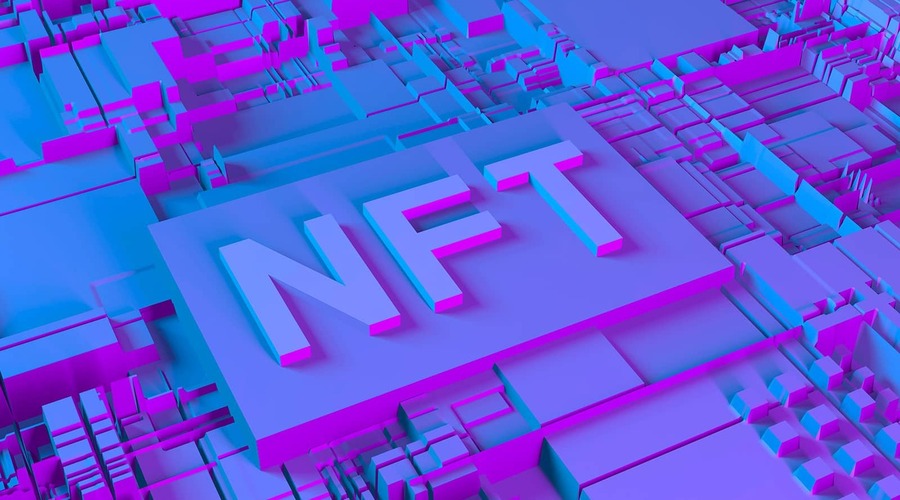Environmental Impact of NFTs and its Security Implications

Environmental Impact of NFTs and its Security Implications
In recent years, Non-Fungible Tokens (NFTs) have gained immense popularity in the world of art, collectibles, and digital assets. However, along with their rise in popularity, concerns about their environmental impact and security implications have emerged. This article delves into the environmental footprint of NFTs and explores the associated security risks.
Introduction to NFTs
NFTs are unique digital tokens that represent ownership or proof of authenticity of a specific digital item, such as artwork, music, or video clips. These tokens are typically built on blockchain technology, which provides transparency and immutability to transactions. While NFTs have opened up new avenues for artists and collectors, their underlying infrastructure has raised significant environmental concerns.
Understanding NFTs
Before diving into the environmental impact, it’s crucial to understand how NFTs function. NFTs are created, bought, and sold on blockchain platforms, primarily Ethereum. Each NFT has a unique digital signature, which distinguishes it from other tokens. This uniqueness is what gives NFTs their value and scarcity.
The Popularity of NFTs
NFTs have gained widespread attention and adoption due to several factors. Firstly, they provide artists with a new way to monetize their digital creations and earn royalties on secondary sales. This has attracted creators from various fields, including artists, musicians, and content creators.
Additionally, the allure of ownership and exclusivity has made NFTs appealing to collectors and enthusiasts. The ability to prove ownership of a digital item has disrupted traditional notions of ownership and has created a new digital economy.
Environmental Impact of NFTs
Despite their popularity, NFTs have been criticized for their significant environmental impact. The primary concern revolves around the energy consumption and carbon footprint associated with the underlying blockchain technology.
- Energy Consumption: Blockchain networks, like Ethereum, rely on a consensus mechanism called Proof-of-Work (PoW). PoW requires vast computational power, leading to substantial energy consumption. The energy consumption of NFTs has been compared to that of entire countries, with some estimating that a single NFT transaction can have a carbon footprint equivalent to a flight across continents.
- Carbon Footprint: The energy consumption of blockchain networks directly translates into carbon emissions. The majority of the energy used in PoW blockchains comes from fossil fuel sources, contributing to greenhouse gas emissions and climate change. As the popularity of NFTs continues to rise, so does the carbon footprint associated with their creation and trading.
Sustainable Alternatives to NFTs

While the environmental impact of NFTs is concerning, efforts are being made to develop sustainable alternatives. Here are a few potential solutions:
- Proof-of-Stake Blockchains: Proof-of-Stake (PoS) is an alternative consensus mechanism that requires significantly less energy compared to PoW. PoS blockchains rely on validators who hold a stake in the network and are chosen to create new blocks based on their holdings. This shift to PoS blockchains can greatly reduce the energy consumption of NFT transactions.
- Eco-Friendly NFT Platforms: Some blockchain platforms have emerged with a focus on environmental sustainability. These platforms use PoS consensus mechanisms or implement energy-efficient protocols to minimize their carbon footprint. Artists and collectors can choose to utilize these eco-friendly platforms to reduce the environmental impact of their NFT transactions.
- Carbon Offset Programs: Another approach to mitigate the environmental impact of NFTs is through carbon offset programs. Artists and platforms can invest in projects that reduce carbon emissions or support renewable energy initiatives to offset the carbon footprint associated with their NFT transactions. This can help create a more sustainable NFT ecosystem.
Security Implications of NFTs
Alongside the environmental concerns, NFTs also present certain security implications that need to be addressed:
- Counterfeit NFTs: As the popularity of NFTs grows, so does the risk of counterfeit tokens. Without proper authentication mechanisms and decentralized verification, it becomes easier for malicious actors to create fake NFTs and deceive buyers. Ensuring the authenticity and provenance of NFTs is crucial to maintain trust within the ecosystem.
- Intellectual Property Rights: NFTs introduce new challenges when it comes to protecting intellectual property rights. The ease of tokenizing digital assets opens the door to unauthorized duplication and distribution. Artists and creators must navigate the complexities of copyright and licensing to protect their work and ensure they receive fair compensation for their creations.
- Privacy Concerns: Blockchain technology, which underlies NFTs, operates on a transparent and immutable ledger. While transparency is beneficial for proving ownership, it raises concerns about privacy. Personal information associated with NFT transactions can be exposed, potentially compromising the privacy and security of the individuals involved.
Balancing Environmental Concerns and NFT Adoption
As the environmental impact and security implications of NFTs become more apparent, there is a growing need to strike a balance between the adoption of NFTs and sustainability. This can be achieved through various means, such as:
- Educating artists and collectors about the environmental impact of NFTs and encouraging them to make informed decisions.
- Supporting and promoting sustainable blockchain technologies and platforms that prioritize energy efficiency and carbon neutrality.
- Implementing decentralized authentication and verification mechanisms to combat counterfeit NFTs.
- Advocating for clearer regulations and guidelines to protect intellectual property rights within the NFT ecosystem.
NFTs and Artistic Expression
NFTs have opened up new avenues for artistic expression and creativity. Artists can now tokenize their digital works, allowing for easy ownership transfer and secondary market sales. This has democratized the art world, enabling emerging artists to gain recognition and monetize their creations directly, without relying on traditional gatekeepers.
However, the environmental impact of NFTs raises questions about the sustainability of this newfound artistic freedom. Artists must strike a balance between their desire for artistic expression and the responsibility to minimize their ecological footprint.
The Role of Collectors and Investors
Collectors and investors play a significant role in the NFT ecosystem. They are the ones driving demand for digital artworks and collectibles, thereby influencing the market and the environmental impact. As collectors become more aware of the environmental concerns surrounding NFTs, they have the power to shape the industry’s practices.
By supporting artists and platforms that prioritize sustainability and transparency, collectors can promote eco-friendly initiatives within the NFT space. They can also demand greater accountability from platforms, encouraging them to implement energy-efficient solutions and carbon offset programs.
Blockchain Innovations for Sustainability
In response to the environmental criticism, blockchain developers and researchers are actively exploring alternative consensus mechanisms and energy-efficient protocols.
One such innovation is the transition from Proof-of-Work to Proof-of-Stake consensus. Unlike PoW, which requires miners to solve complex mathematical puzzles, PoS selects validators based on the number of tokens they hold. This shift significantly reduces energy consumption and lowers the carbon footprint of blockchain networks.
Additionally, Layer 2 solutions and sidechains are being developed to alleviate the burden on the main Ethereum network, further improving scalability and energy efficiency.
Educating the Community
Education is vital in addressing the environmental impact of NFTs and fostering a sustainable mindset within the community. Artists, collectors, and platform operators should actively engage in educating themselves and others about the implications of their actions.
Promoting awareness campaigns, organizing panel discussions, and sharing best practices can help disseminate knowledge and encourage responsible behaviors. Artists can take the lead by openly discussing their sustainability efforts and sharing their experiences with adopting eco-friendly practices.
The Future of NFTs: Sustainable and Secure
The future of NFTs lies in finding the right balance between innovation, sustainability, and security. The NFT community, including artists, collectors, and platform operators, must collaborate to implement measures that address environmental concerns and security risks.
By embracing eco-friendly blockchain technologies, supporting carbon offset initiatives, enhancing authentication mechanisms, and advocating for robust intellectual property rights protection, the NFT ecosystem can evolve into a sustainable and secure space.
In conclusion, while NFTs have sparked a digital revolution in the art and collectibles industry, their environmental impact and security implications cannot be ignored. Artists, collectors, and platforms must take proactive steps to minimize their carbon footprint, protect intellectual property rights, and ensure the privacy and security of participants. By embracing sustainability and prioritizing security, the NFT ecosystem can thrive and contribute positively to the future of digital ownership.
Conclusion
NFTs have revolutionized the digital art and collectibles industry, offering new opportunities for artists and collectors. However, the environmental impact and security implications associated with NFTs cannot be ignored. It is essential for artists, platforms, and the wider community to prioritize sustainability and take proactive steps to mitigate the environmental footprint while addressing the security risks. By fostering a sustainable and secure NFT ecosystem, we can ensure the long-term viability and positive impact of this exciting technology.
FAQs
- Are all NFTs bad for the environment?
- Not all NFTs have the same environmental impact. The carbon footprint of an NFT depends on the blockchain network it is built upon and its consensus mechanism. Choosing eco-friendly platforms and supporting carbon offset programs can mitigate the environmental impact.
- Not all NFTs have the same environmental impact. The carbon footprint of an NFT depends on the blockchain network it is built upon and its consensus mechanism. Choosing eco-friendly platforms and supporting carbon offset programs can mitigate the environmental impact.
- How can artists mitigate the environmental impact of NFTs?
- Artists can opt for blockchain platforms that utilize energy-efficient consensus mechanisms like Proof-of-Stake. They can also participate in carbon offset programs or support eco-friendly initiatives to reduce the carbon footprint of their NFT transactions.
- Artists can opt for blockchain platforms that utilize energy-efficient consensus mechanisms like Proof-of-Stake. They can also participate in carbon offset programs or support eco-friendly initiatives to reduce the carbon footprint of their NFT transactions.
- Can NFT platforms improve their sustainability practices?
- Yes, NFT platforms can play a significant role in improving sustainability practices. By transitioning to energy-efficient blockchains, implementing carbon offset programs, and educating their users about environmental impact, platforms can contribute to a more sustainable NFT ecosystem.
- Yes, NFT platforms can play a significant role in improving sustainability practices. By transitioning to energy-efficient blockchains, implementing carbon offset programs, and educating their users about environmental impact, platforms can contribute to a more sustainable NFT ecosystem.
- What are the security risks associated with NFTs?
- Security risks include counterfeit NFTs, unauthorized duplication, and distribution of digital assets, and potential privacy breaches due to the transparent nature of blockchain. Proper authentication mechanisms, intellectual property rights protection, and privacy-focused solutions are necessary to address these risks.
- Security risks include counterfeit NFTs, unauthorized duplication, and distribution of digital assets, and potential privacy breaches due to the transparent nature of blockchain. Proper authentication mechanisms, intellectual property rights protection, and privacy-focused solutions are necessary to address these risks.
- How can individuals contribute to a sustainable NFT ecosystem?
- Individuals can support artists and platforms that prioritize sustainability, choose eco-friendly NFT platforms, educate themselves about the environmental impact, and advocate for sustainable practices within the NFT community.








